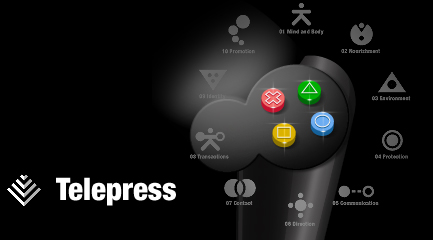A
sign is a broad term encompassing a range of concepts. Symbols,
indexes and icons are categories within this range. Each of these
categories vary in their degree of abstraction. Symbols are the
most abstract and are based on convention (everyone agrees on the
meaning of the symbol). They don't look like the objects or concepts
that they signify. Icons are at the other end of the spectrum. Icons
do resemble the objects or ideas that they are referring to (the
referent). Indexes fall between symbols and icons in their level
of abstractness.
Distinctions are not often easy to make. A map for example, can
be argued to be a symbol, an icon or an index with equal justification.
Effective communication does not require us to differentiate between
these types. An understanding of what sets them apart can, however,
make our attempts at communication more effective.
A system of 50 symbol signs was designed for use at the crossroads
of modern life: in airports and other transportation hubs and at
large international events. Produced through a collaboration between
the AIGA and the U.S. Department of Transportation, they are an
example of how public-minded designers can address a universal communication
need.
Prior to this effort, numerous international, national and local
organizations had devised symbols to guide passengers and pedestrians
through transportation facilities and other sites of international
exchange. While effective individual symbols had been designed,
there was no system of signs that communicated the required range
of complex messages, addressed people of different ages and cultures
and were clearly legible at a distance.
To
develop such a system, AIGA and D.O.T. compiled an inventory of
symbol systems that had been used in various locations worldwide,
from airports and train stations to the Olympic Games. AIGA appointed
a committee of five leading designers of environmental graphics,
who evaluated the symbols and made recommendations for adapting
or redesigning them. Based on their conclusions, a team of AIGA
member designers produced the symbols.
A first set of 34 symbols was published in 1974, and received one
of the first Presidential Design Awards; 16 more symbols were added
in 1979. These copyright-free symbols have become the standard for
off-the-shelf symbols in the catalogues of U.S. sign companies.
|


